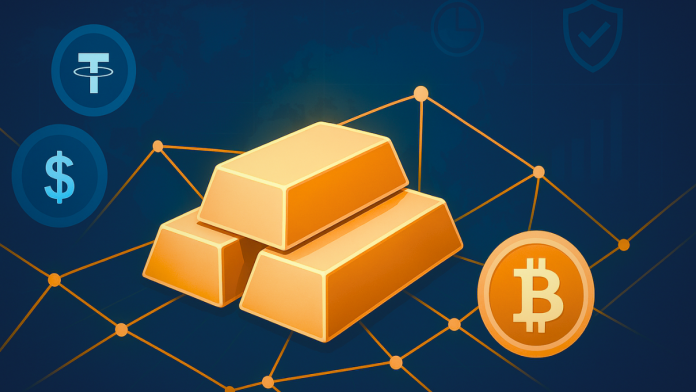In 2025, a new challenge has taken center stage in global finance: the rise of crypto-to-gold laundering. This process involves criminals converting digital currencies, especially stablecoins such as Tether’s USDT and Circle’s USDC, into physical gold through offshore firms, tokenized platforms, and exchanges with weaker oversight. The goal is to move money without going through traditional banks, making it harder for regulators to track.
The U.S. Treasury’s Financial Crimes Enforcement Network (FinCEN) has reported a sharp rise in suspicious financial activity linked to this method. Since 2023, the number of reports about cryptocurrency being converted into gold has increased by around 40%. This indicates that criminal networks are shifting from cash-based laundering to more modern and complex methods.
According to regulators, Russian oligarchs have used Hong Kong-based shell firms to buy gold with stablecoins, while groups such as the Sinaloa Cartel in Mexico have adopted TRON-based stablecoins for transferring drug profits. Once converted into gold, the metal is smuggled into markets where oversight is weaker, creating a financial trail that is harder to follow.
India’s betting-app ban could increase offshore gambling and crypto money flows
Tokenized gold, a digital version of physical bullion, has added another layer of difficulty for regulators. Platforms offering tokenized gold allow users to trade digital assets backed by real bullion, which can later be redeemed for physical metal. For criminals, this means avoiding traditional banks altogether while moving value across jurisdictions with little friction.
Regulatory Crackdowns Across Regions
Governments have responded with stricter rules to close loopholes. In August 2025, China introduced new anti-money laundering rules requiring gold and gemstone dealers to report cash transactions above 100,000 yuan. The aim was to cut down on large anonymous purchases of precious metals. However, criminals have adapted by breaking down transactions into smaller amounts or shifting operations to Dubai and Singapore, where oversight is less strict.
In the European Union, the Markets in Crypto-Assets (MiCA) framework has increased the pressure on stablecoin issuers. These rules demand more due diligence and stricter monitoring of how stablecoins are used. Still, the effectiveness of these measures depends on how consistently they are enforced across different member states.
🛑 UK blows lid on Russia’s $9.3B crypto sanctions dodge through Kyrgyzstan financial network
These changes are not only affecting criminals but also reshaping the way financial markets operate. The tighter rules have led to a growing demand for compliance technology. Companies such as Chainalysis, Elliptic, and CipherTrace are now in high demand, providing blockchain analytics tools to track suspicious flows of digital money. Banks, exchanges, and institutional investors rely on these tools to reduce risks and stay compliant with evolving regulations.
At the same time, demand for gold investments has shifted. Ethical or ESG-aligned gold funds, such as the iShares ESG Aware Gold ETF (SGOL), have become more attractive to investors who want exposure to the metal without the reputational risks of being linked to illegally sourced gold. Traditional funds like SPDR Gold Shares (GLD) remain popular, but ESG-focused products are gaining traction in this changing environment.
Institutional Investors Adapt Strategies
For institutional investors, the rise of crypto-to-gold laundering has forced a shift in strategy. Three main responses have taken shape.
Thai authorities uncover $50 million crypto-to-gold scheme linked to call-center investment scam
The first is adopting compliance technology. Financial firms are increasingly turning to blockchain analytics providers like Chainalysis and CipherTrace that can flag unusual or suspicious activity in real time. These technologies are now seen as a defensive measure against both regulatory penalties and reputational harm.
The second strategy is investing in gold through funds that follow strict environmental, social, and governance guidelines. ESG-aligned ETFs like SGOL screen out gold linked to questionable supply chains. For investors, this provides a safer way to hold gold while signaling responsible practices.
The third adaptation involves strengthening digital infrastructure. Secure custody services for cryptocurrencies have become a priority. Firms such as BitGo and Fireblocks offer institutional-grade storage solutions that help investors protect their digital assets from theft, exchange failures, or mismanagement. This ensures that when investors do engage with digital currencies, they can do so with lower operational risk.
The combination of rising money laundering cases, evolving regulations, and investor adaptation has created a new landscape where crypto and gold intersect. The shadow economy built around this process is complex, but so is the effort to respond. Governments, technology firms, and investors are all adjusting to a reality where digital money and physical gold have become tightly linked in the global financial system.


